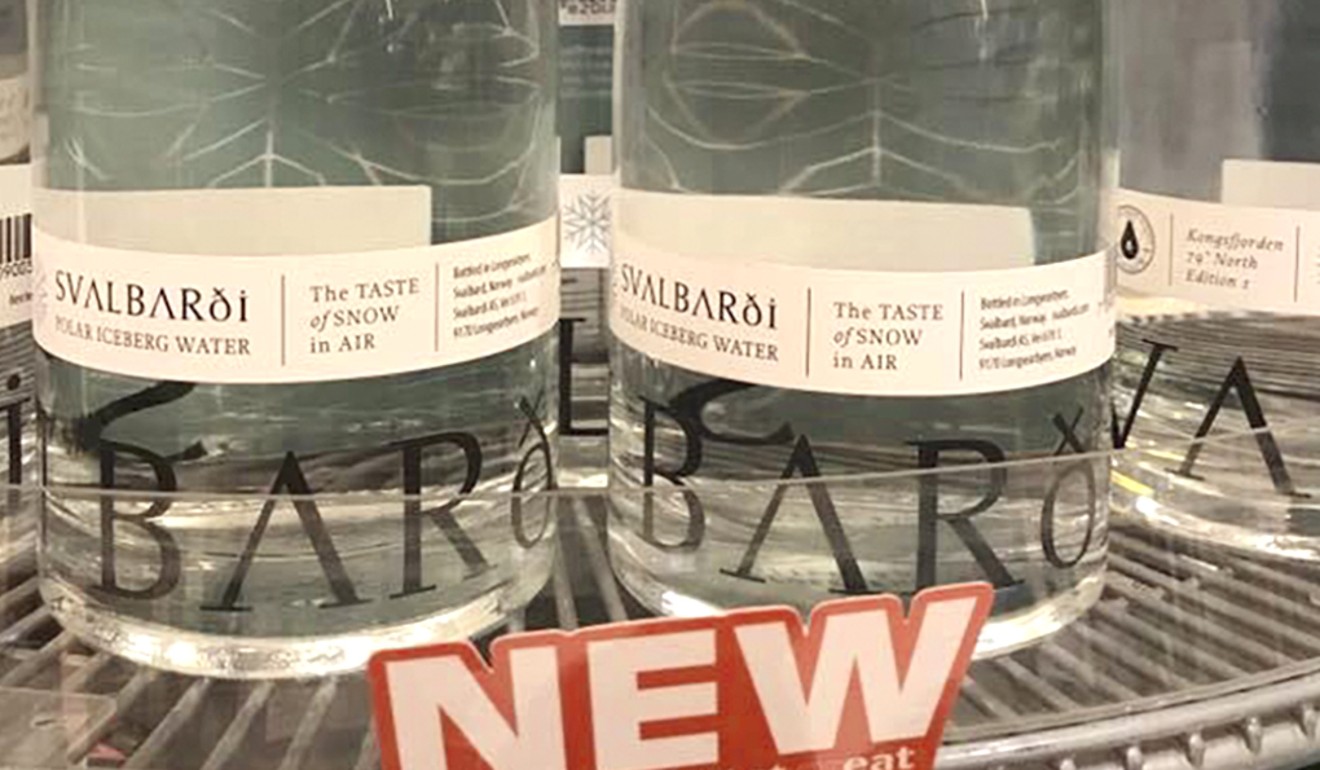
Who is the ‘crazy American’ behind Svalbardi’s HK$950 iceberg water in Hong Kong?
Former Wall Street market analyst claims his product is environmentally friendly and ‘a celebration, not just hydration’, but green groups disagree
The man behind the HK$950 bottles of Arctic glacier water stripped from a Hong Kong supermarket’s shelves has defended the product and says he hopes to sell 100,000 bottles a year.
Last week, Svalbardi received a frosty reception with internet users slamming it as “totally environmentally unfriendly” and “stupid” when its products went on sale in Great Food Hall in Pacific Place, prompting the supermarket to take the item off shelves.
It was about 19 times more expensive than a similarly sized S Pellegrino, the next most costly bottled water sold at the supermarket.
HK$950 bottled water made from polar glaciers, pulled from Hong Kong shelves
But the brand’s Norwegian-American founder Jamal Qureshi, a former Wall Street market analyst, insisted the products were environmentally friendly.
He has experienced backlash before, including from fellow residents of Svalbard, a remote Norwegian archipelago home to fewer than 3,000 people between Norway and the North Pole.
“To be honest, some of the locals at first were like: who’s this crazy American guy coming up here wanting to sell icebergs? People started to understand it as time went on,” he told the Post from Svalbard, where he now lives.
“Now some of the local people are some of our best customers.”
The business dates back to 2013, when Qureshi first visited Svalbard and collected water there to take back to his wife as a gift.
The former Mormon missionary later gained approval from the governor of Svalbard to charter a vessel and seek out the “purest of icebergs”.
During each expedition, the company collects 15 tonnes of ice broken off from glaciers. It then melts the ice and bottles the water by hand, using only non-chemistry-altering filters, according to Qureshi.
So far, the company has produced 15,000 bottles which are distributed on its website and in nine territories around the world.
Qureshi said he was not making a profit yet, although in the future, the aim was to sell 100,000 bottles a year.

He said people buy the water for a range of reasons – as a replacement for wine, for the taste, or even as a nice piece of glassware.
Qureshi claimed the company was taking something that was happening naturally – ice breaking off glaciers, a process which had sped up because of global warming – and using it to create a product that would raise awareness about climate change and support environmental projects.
The brand is carbon-neutral certified and supports green programmes, including one providing access to clean water in Uganda and Malawi, according to Qureshi.
“It’s easy to come up with an initial response that is negative, but the actual work we do at the core is to produce something positive from a difficult situation.
“We are not hacking anything off a glacier. These are icebergs that have already broken off into the sea,” he said. “We’re taking a natural resource that would have melted and be lost otherwise. We’re doing things in a sustainable way and giving something back.”
“This is not something that wildlife is using – polar bears are not using [the broken ice] for hunting. It would have melted off in days or weeks, further contributing to rising sea levels.”
New Zealand air farmers are cashing in on China’s air pollution
“This is not just hydration – this is a celebration. It is a product for a special occasion,” he said.
But Greenpeace senior campaigner Frances Yeung Hoi-shan said she was concerned about the high carbon footprint from producing bottled water and shipping it to a place like Hong Kong, where there was plenty of water available.
She said the North Pole was an environmentally sensitive area, and it was important to protect it rather than create a product from its resources. “It is overconsumption. This is not necessary.”
Gavin Edwards, a director from global conservation body WWF, also questioned if the brand was “selling polar bear habitat”, as even if the water was not directly sourced from areas frequented by the animal, removing the ice contributed to the bear’s dwindling environment.
Edwards urged consumers in Hong Kong to opt for water which had not been shipped from across the world, as this had less of an environmental impact.
Svalbardi’s Hong Kong distributor – who did not want to be named – told the Post that a luxury brand had agreed to serve the water to customers at its Hong Kong store.
The local distributor had been prepared for some criticism, but he thought the negativity so far was “quite excessive”.
“I think mostly it’s a misunderstanding on their part about the water,” he said.
Ultimately, the icy comments had not hurt sales – he had sold 12 bottles of the water directly to customers since the negative comments.
He described buyers as “those who can afford it, because it is expensive.”
Svalbardi is just one of a number of boutique water brands around the world with unusual sources such as rain water and deep seawater.
It’s not the first time the brand has received bad press.
Earlier this year, Svalbardi was slammed in a Guardian opinion piece for the “sheer insensitivity of exploiting one of the world’s last wildernesses, and charging such a high price”.
“The emergence of luxury water is just another ugly indicator of our world’s many inequalities,” Guardian journalist Katherine Purvis wrote.

